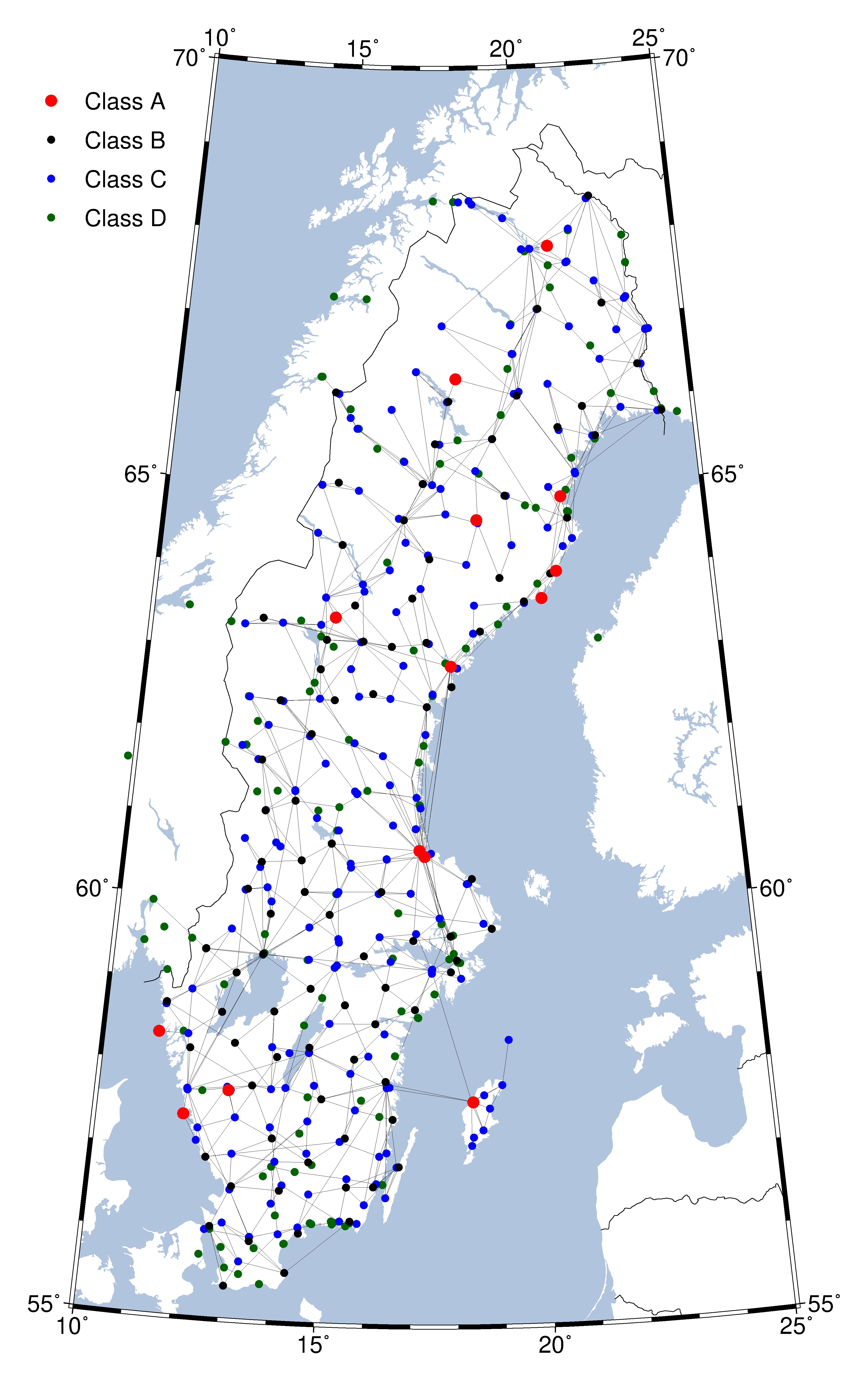Contents of this page may be automatically translated, we take no responsibility for the accuracy of the translation. Feel free to contact our customer support centre if you have any questions.

RG 2000, the new Swedish gravity reference frame, is based on a large number of absolute gravity measurements.
The points of the gravity reference network
The gravity reference points in RG 2000 are divided into different classes, where class A is the foundation, based on thirteen years of repeated measurements (2004–2016) using absolute gravimeters. There are 18 class A points, situated indoors on concrete. The points are not accessible to the public.
The class B points were measured between 2011 and 2015 using a portable absolute gravimeter and also by using relative gravimetry at other times. There are 95 such points and they are situated outdoors, either at height benchmarks or on church steps. Almost half of them were included in either RG 82 or RG 62.
Class C points have only been measured with relative gravimetry. Measurements from 1975 to 2019 are included in the computation of RG 2000, which means that all relative gravity measurements that were included in RG 82 were also included here. These measurements also connect the points of the different classes into a network. There are class C points situated very near the class A points and they have very low uncertainty of the measurements due to the short distance between the points. In total there are 230 class C points.
The adjustment of RG 2000
All these absolute and relative gravity measurements were included in the final adjustment of the RG 2000 network. Totally there are 343 points with very low uncertainty of the measurements, from the church in Karesuando in the north to the Maglarp church ruin (Trelleborg) in the south and from the church in Tanum in the west to Haparanda in the east. Earth tide, polar motion and postglacial land uplift have been taken into consideration when computing the RG 2000 solution.
The second order adjustment
Class D points have only been measured with relative gravimetry. These are computed in a second order adjustment, with the class A–C points fixed. All RG 62 points are included, if not already included in a higher point class. The measurements are made between 1960 and 2019, and the measurement uncertainty is significantly higher than for the class C points. The total number of class D points are 148, of which approximately one third are destroyed, and thus no longer usable.
Detailed information about RG 2000
Lantmäterirapport 2019:3 (pdf, new window) describes RG 2000 in detail – the development of the system and frame, as well as point information and how measurements and computations were performed.


